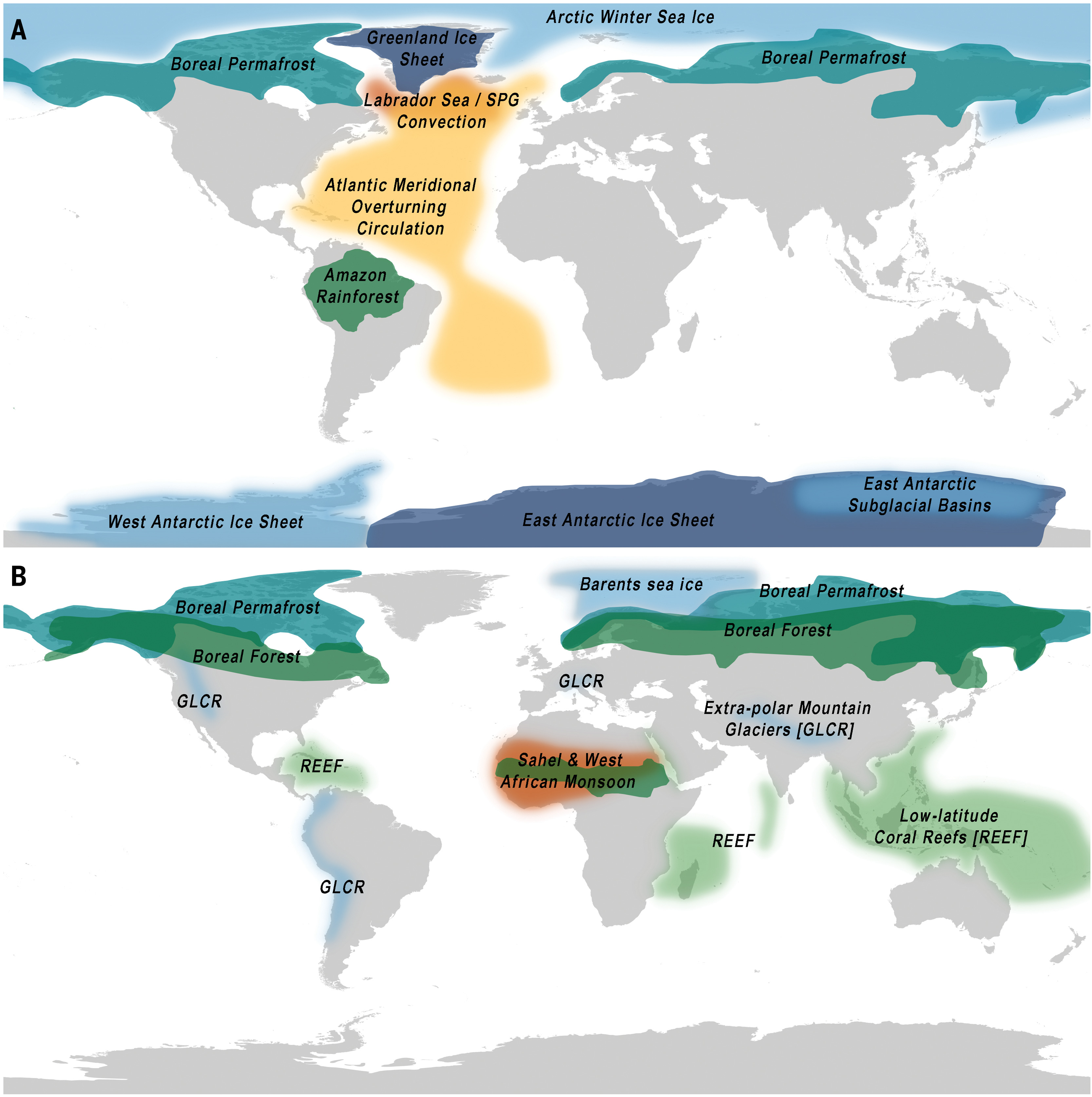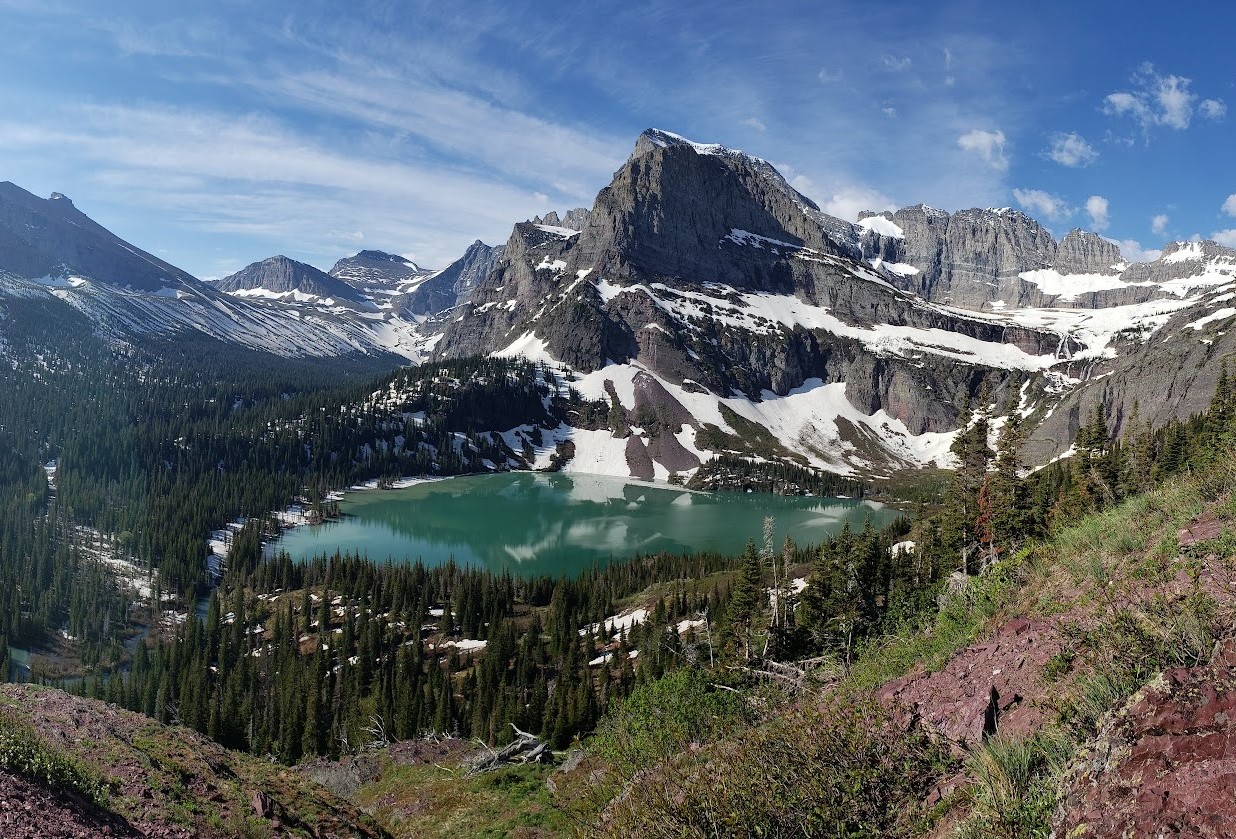I’m not going to spend time listing all of the droughts, floods, wildfires, and heatwaves we’ve seen this summer alone from climate change. Instead, I’m going to explain some of the news about climate tipping points that you might not have heard about. (If your climate anxiety is already high enough, maybe skip this one and go straight to the “what can I do now?” post.)
What is a tipping point again?
A tipping point is an abrupt change in a system’s state due to a disproportionately small change in a driver of the system that causes a self-reinforcing feedback - like the snowball rolling down the hill, gathering snow and momentum as it goes. While tipping points are applicable to lots of systems, there are several within the Earth’s climate system that have the potential to collapse and abruptly change the climate systems that create the somewhat-predictable weather we have today. Scientists have tried to predict at what amount of warming each of these climate tipping points might collapse, which range from +1C (1.8F) to +10C (18F). You can read more in this post.
What’s new here?
There’s compounding research from the last few months that shows that the tipping points might happen much sooner than we thought. First, a new study has shown that while systems are vulnerable to tipping from a single major driver like global warming, combining that driver with the interactions with other tipping systems as well as increased variability and extreme events (also caused by global warming) can create a synergistic effect on tipping the system. This synergy brings the collapse date much sooner than it would from warming alone.
Second, models now show that the Arctic will not have summer sea ice within the next couple decades due to human-induced climate change, no matter how much we reduce emissions going forwards. This is different from the previous IPCC reports that held out some uncertainty in a low emissions scenario, but this research found that current climate models are underestimating Arctic melting. An ice-free Arctic summer, besides being devasting for the wildlife there, will accelerate warming by decreasing the reflectivity of the area and absorbing more of the sun’s heat. This will also accelerate other critical tipping points like the Greenland ice sheet.
Third, the Greenland ice sheet is accelerating its melting. This is a critical climate tipping point because a) it holds a huge amount of water that would create meters of sea level rise if it melted and b) as it starts to melt, it similarly reinforces its own melting like the Arctic. Melting adds more cold freshwater to the northern Atlantic, which then destabilizes the Atlantic Meridional Overturning Current (AMOC).

Map of the global climate tipping elements (source study). Top figure shows global core elements, while bottom picture shows regional systems.
Last but not least, AMOC is likely to collapse much sooner than predicted this study found. AMOC is the current that brings warm water to the northern Atlantic and influences many weather patterns (e.g. making Europe relatively temperate despite its latitude and bringing the West African monsoon). The Gulf Stream is part of this current. The IPCC thought that AMOC wasn’t likely to collapse until next century. However, looking at the early warning signals of tipping points shows that the current is slowing down and approaching a tipping point. The latest estimates are as early as 2025, with the middle of the confidence interval in 2057. AMOC collapse would lead to the collapse of the West African monsoon, dry the Arctic, make heat stay trapped in the Southern Ocean and accelerate warming and melting in the Antarctic.
None of that sounds good!
These developments emphasize that we are forcing the climate to change too fast, leading to probable (if we don’t change) collapse of the systems that keep our world liveable. Climate change may seem like it’s here, but we’ve barely started snowballing down the hill. If we proceed on this course, it will get dramatically worse very quickly.
